We Indians and our love for Mango! It’s a bond no other country will ever understand. For most of us, Mango comes with sweet memories from our childhood. All of us have some or the other story around Mangoes. This is also the time of the year when our box of mithais is replaced with a box of mangoes as protocol. Mangoes and everything around it is the epitome of Indian culture and everything we stand for.
BUT!
But, but, but …… the past 2 decades have changed this. For some odd reason, mangoes have been attached to being overweight and unhealthy.
Each year in March, all my clients schedule a call for the “Mango conversation”. They come prepared for a negotiation on the amount and frequency of consumption. The do’s and dont’s and are completely prepared to hear me say “No Mangoes” and then eat it on the sly.
If this is you as well, keep reading! You are going to love me after reading this article.
FORGET BEING UNHEALTHY, MANGOES ARE GOOD FOR YOU!
Yes, you read that right.
Contrary to what everyone focuses on, Mangoes actually reduce inflammation, improve gut health, are antidiabetic and help with PCOS, liver disorders and more.
Things You SHould Know About Mangoes
1. understanding the various types of mango
India has over 1500 varieties of mango! They vary in taste, acidity, sugar content, fibre content etc.
This difference can actually be used as a hack! (for specific health goals only)
Think of Alphonso and Pairi Aam. Do they taste the same?
Pairi is a lot more tart compared to Haapus and this tells us that Haapus probably has more sugar. If you are someone who is watching their carb intake, this can be a great hack!
Here are the sugar content of different Indian mango varieties:
Pairi – 13 g
Alphonso – 17 g
Kesar – 20 g
Neelum – 12.8 g
Priyur – 12.5 g
Muvandan – 6 g
PS – tests on these foods are limited, and the numbers mentioned are based on very basic sources, they may be wrong.
But, as you can see, just by choosing a different variety, you could lower the glucose consumption.
2. Stages of Ripeness
Apart from the sugar content of mango, another common concern is the acidity or heaty quality of the fruit
As the mango fruit ripens, the sugar content of the fruit increases, the soluble fiber ‘pectin’ decreases and the acidity of the fruit also decreases.
The best way would be – choose a slightly unripe mango and soak it overnight to reduce the heaty effect of the fruit.
3. DIFFERENT PARTS OF MANGO
Every part of the Mango tree has health benefits. The pulp, peels, leaves, barks, seeds, everything! Ayurveda talks about this a lot.
So let’s look at what the various parts do and of course, decode the most fun part of the fruit – the pulp.
-
-
-
- Mango Pulp:
The pulp contains an active compound called ‘mangiferin’. This mangiferin has powerful anti-oxidant & anti-inflammatory properties and has shown to help against several lifestyle disorders like obesity, PCOS, fatty liver and even diabetes! This compound optimises immune function, lowers blood pressure and lipids, slows down ageing, protects against cancers and has a great impact on gut health. Mangiferin improves cognitive function, reduces anxiety and actually helps in multiple neurological disorders too.The pulp has a Glycemic Index of 51, which is considered quite low. To give you a reference point, Pineapple is higher than this, Watermelon is higher than this and even Litchi is higher than this. Mango is actually a low to medium GI fruit, which means it is safe for diabetes, PCOS, those on weight loss programs, etc. (Read the section called “Then Why Is Mango Bad” before you start eating though). - Peels:
The peels are actually very rich in polyphenols and carotenoids, both of which will protect the body from oxidative damage, improve immune function, etc. If you are using organic mangoes, you could dry them into chips or make a pickle/ chutney out of them. You could also dry them, powder them and use for a the mild mango aroma they present. - Seed Kernels:
My grandmother tells me how they used to mango seeds or the “ghutli” in her village. At the end of the day, all the mango seeds were washed and dried and then shoved under the “chulha” to be slow-roasted overnight. By morning, the seed was nicely roasted, they would crack it open and out came 3 black roasted kernels that they would then enjoy as a quick snack.These kernels are a powerhouse. They contain phytosterols which do exactly what your anti-cholesterol medication does in the body. In a vegetarian diet, these are great too. They contain the few essential amino acids that most vegetarian protein sources lack. These include leucine, lycine and valine. - Mango Leaves:
Guys! Mango leaves! They are so good!! They are India’s best secret, hidden, sitting quietly in the homes of those in the know. Mango leaves contain several compounds that improve insulin sensitivity, lower blood glucose levels and in the long term help bring down HbA1c levels. This is a remedy that helps a lot of my clients stay off diabetes medication or maintain remission.
- Mango Pulp:
-
-
THEN WHY IS MANGO CONSIDERED BAD
As you saw, every single part of mango has health benefits. Then why is it a taboo? Here are some reasons:
-
-
- Quantity – pulpy fruits tend to have less water, which means the sugar is more concentrated. In other words, 100g of Mango and 100g of Blueberries would look very different in volume. So, if you eat 1 full mango, you’re eating a good 200g pulp which could mean 30-40g of sugar depending on variety and ripeness. That is a lot of sugar.
So mango is safe as long as you eat up to 100g of pulp at a time, i.e. about 2/3rd (centre ghutli + 1 side). - Soaking – some of the common problems mangoes are associated with (other than weight gain and diabetes) are itchiness, acne, allergies, and ulcers. Traditionally ripe mangoes are soaked for 2-3 hours before eating. This reduces phytic acid, cleans off the sap and reduces heat from the pulp. This traditional technique is now replaced with refrigeration but as you can see, the soaking offers more than just cooling.
- Quantity – pulpy fruits tend to have less water, which means the sugar is more concentrated. In other words, 100g of Mango and 100g of Blueberries would look very different in volume. So, if you eat 1 full mango, you’re eating a good 200g pulp which could mean 30-40g of sugar depending on variety and ripeness. That is a lot of sugar.
-
How to Eat Mango if you have Diabetes
With these simple hacks you can enjoy the mango season to the fullest, while maintaining your blood glucose levels:
- Swap Aamras with the whole fruit – Aamras uses many mangoes at once making it a very concentrated source of sugar. Instead, enjoy the whole unprocessed fruit!
- Have 1/2 a mango at a time, twice a day
- Combine with fat and/or fibre
- Have a carrot/ cucumber before eating the mango
- Have a handful of nuts or some seeds with the mango (I do a chia and almond milk pudding with chopped mango)
- If you have CGMS on, check for spikes. If there is one, immediately get up and start walking. A 15 minute walk or 25 squats will fix this.
- Have a tbsp of vinegar in 200 ml water before eating the mango.
- Never have mango in breakfast. It will cause glucose fluctuations all day.
So the next time anyone tells you, ‘You can’t have mango because you have diabetes!’, send them this article, even if it is your doctor!
For more useful and to-the-point information on health, diabetes, nutrition and everything food, make sure you join my inner circle. I send out recipes, hacks, new research, product reviews and more exclusive content here.






